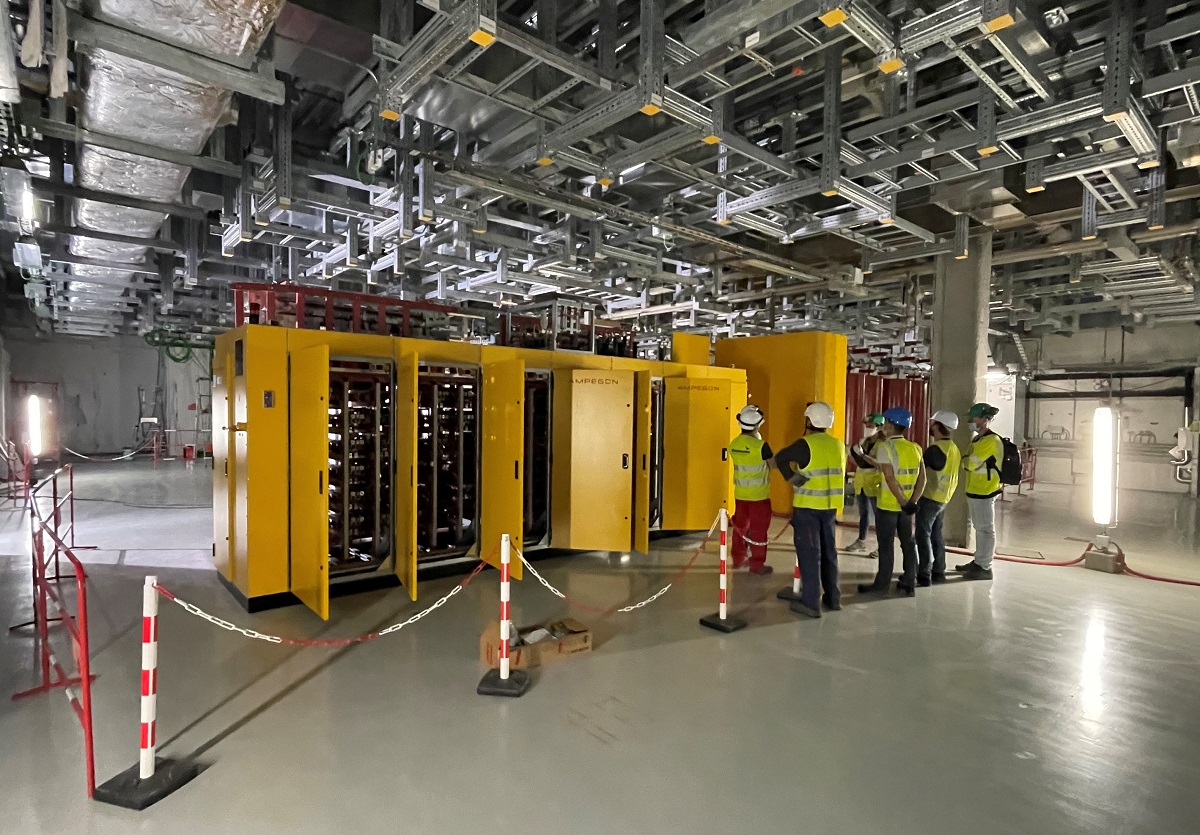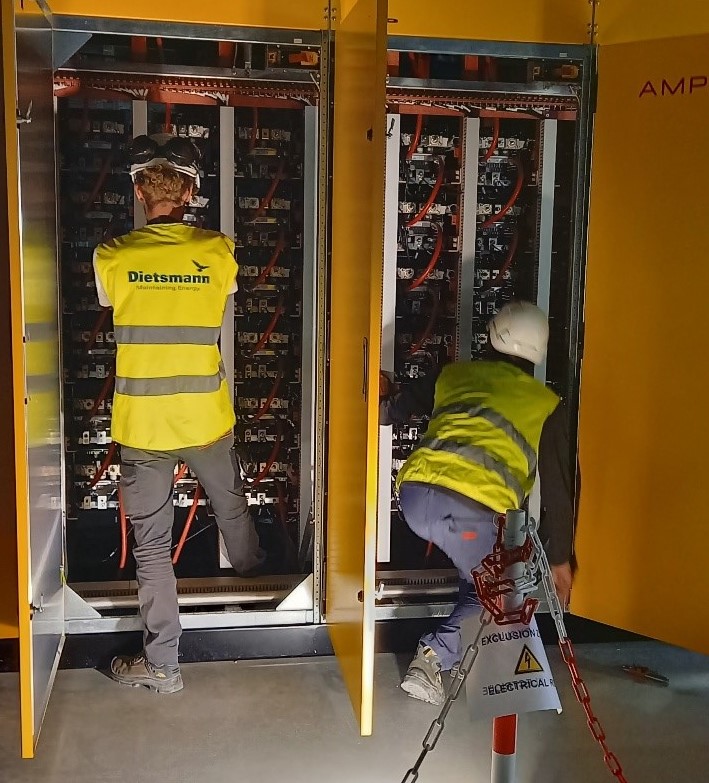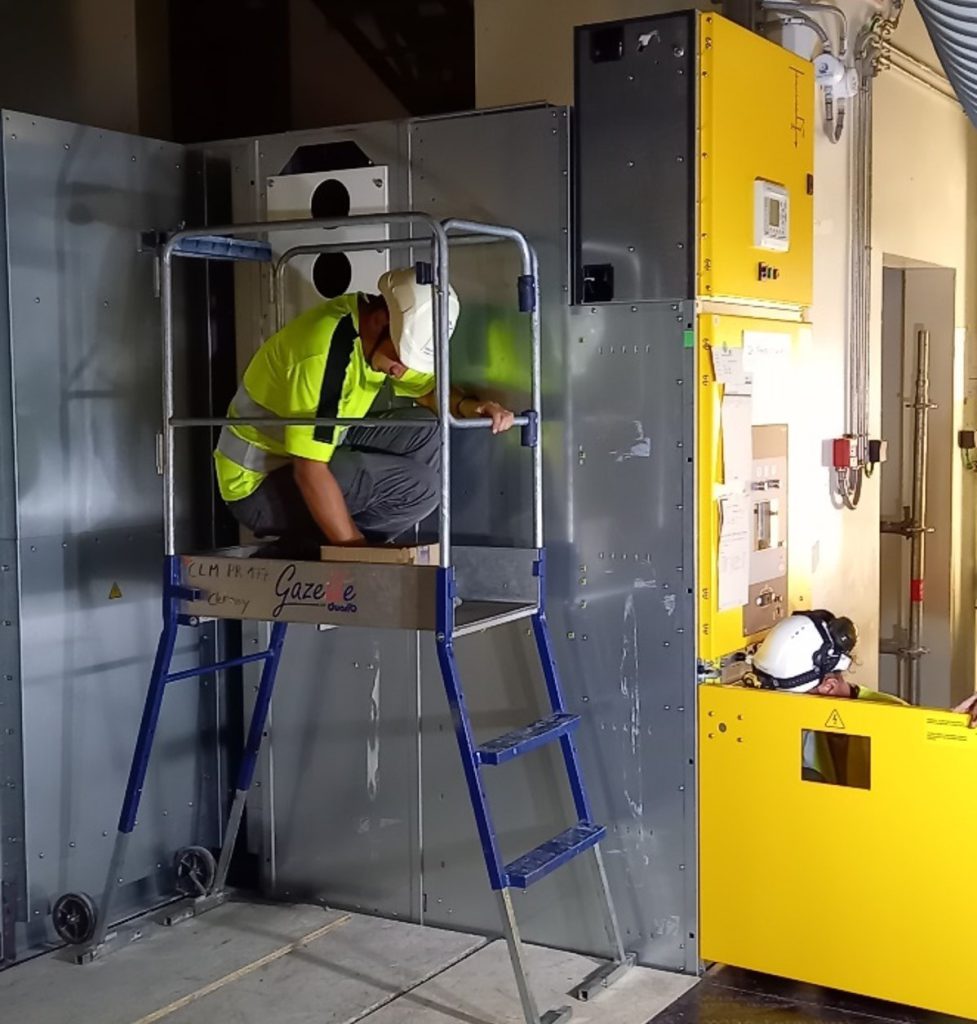High Voltage units to light ITER plasma pass final factory tests

Inspection by F4E and APAVE of the two first Main High Voltage Power Supplies installed in the ITER Radiofrequency Building, Cadarache, France, April 2022. © F4E
Several ITER systems will heat up the ITER plasma up to 150 million °C. The Electron Cyclotron will be one of them, launching powerful microwaves to prevent and control plasma instabilities. To do so, eight high voltage units will supply power to the system. Six of them are already at the ITER site, and the remaining two have just passed the latest factory acceptance tests and will be delivered after summer.
These pieces of equipment will provide regulated, controllable, high voltage and current. They take electricity from the grid to supply the appropriate voltage (up to 90 kV) to gyrotrons, devices that will produce high frequency microwaves to heat the ITER plasma.
Factory acceptance tests have verified that the voltage and current supplied by the units behave as expected in different scenarios imitating ITER conditions. Basically, the units can provide stable voltage, change it very quickly on demand, and switch off in less than 10 microseconds.

It has been a long journey to reach this point. F4E signed a contract with Ampegon for the design and manufacturing of the units in 2013. The “series” production of the eight sets started in 2015 and the factory acceptance tests have been progressively performed over these years. Important organisational changes took place in 2019, when the Italian industrial group Aretè & Cocchi Technology founded Ampegon Power Electronics, and took over all strategic assets of Ampegon. However, this had no impact on the works, which continued with the same high-quality standards. In fact, the last power supply unit was successfully tested in July 2022, ahead of schedule. The production phase carried out in Kleindöttingen (Switzerland), which also relied on the collaboration with ITER Organization and the Swiss Plasma Center, has finally come to an end.
The project is moving now to installation, commissioning and site testing in the ITER Radiofrequency Building. These works started in January 2022 with focus on the first units that will power ITER’s first plasma, and are expected to run until 2025 with the last ones.

Simon Keens, Ampegon Sales & Business Development Manager, shares his thoughts. “Ampegon celebrates the fulfilment of a long-standing commitment to supply ITER with the high voltage power supplies necessary to run its gyrotrons and achieve plasma ignition. In a world with increasing energy insecurity and ever more forceful climate change, Ampegon sees the ITER project as equivalent to the space programme of the 1960s in terms of its endeavour and importance for the future. Indeed, we are already applying technological developments used in the ITER power supplies for novel applications, such as geothermal energy drilling and high efficiency direct current energy transfer. We stand side-by-side with F4E and ITER to push the boundaries of what’s possible.”
Ferran Albajar, F4E Project Manager, is also joyful with the achievement. “During the design and manufacturing of the equipment, Ampegon has always looked for creative solutions to efficiently optimise the system for the ITER environment. Working next to engaged contractors, and with a strong on-going cooperation with ITER Organization, fusion labs and external experts, makes achieving these results very rewarding.”